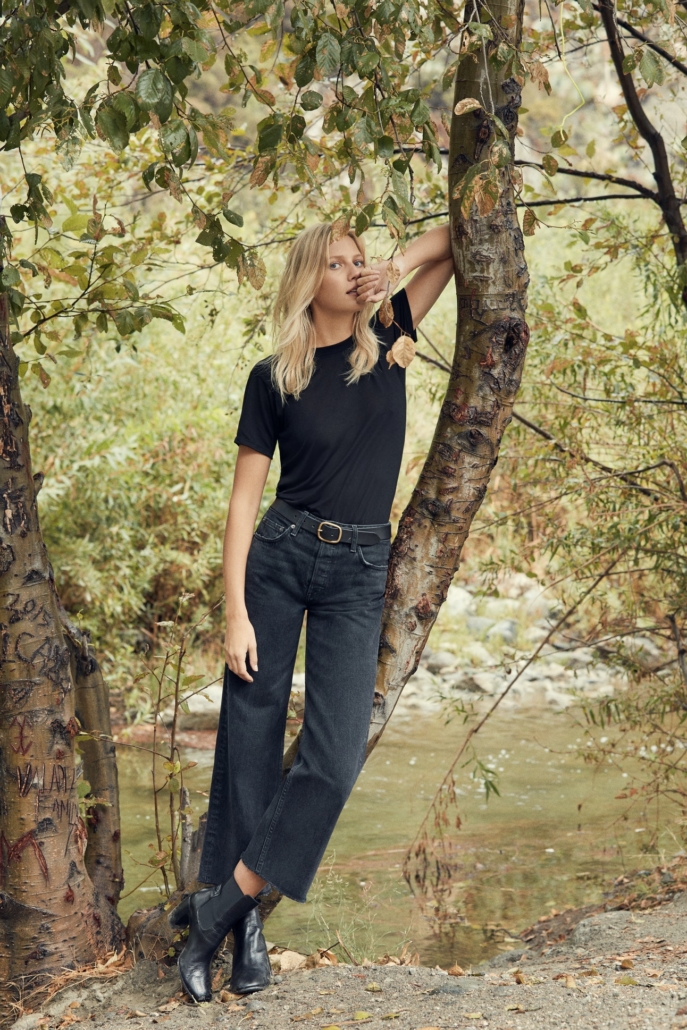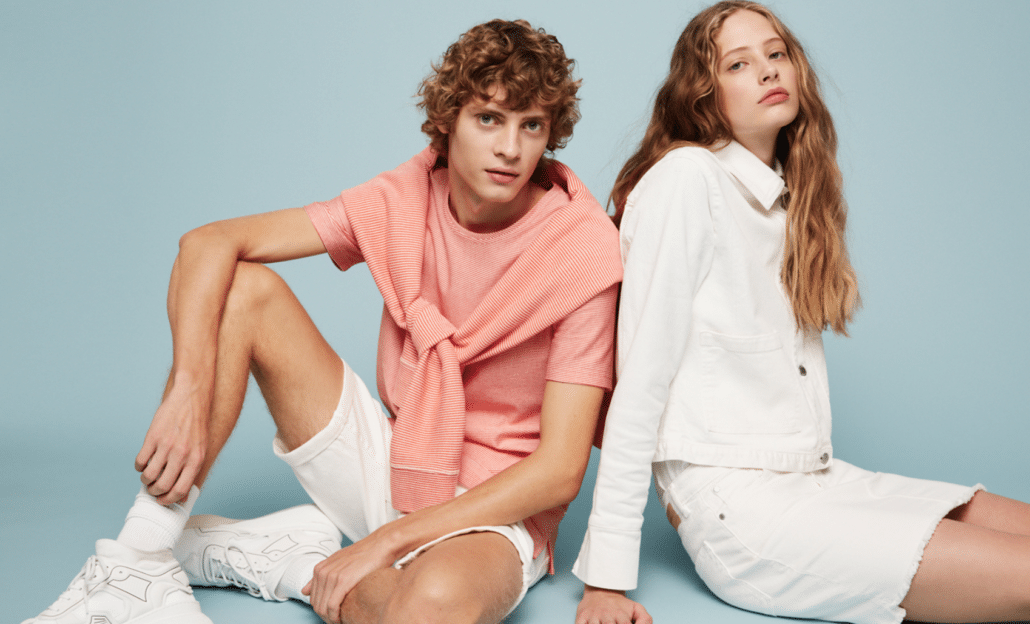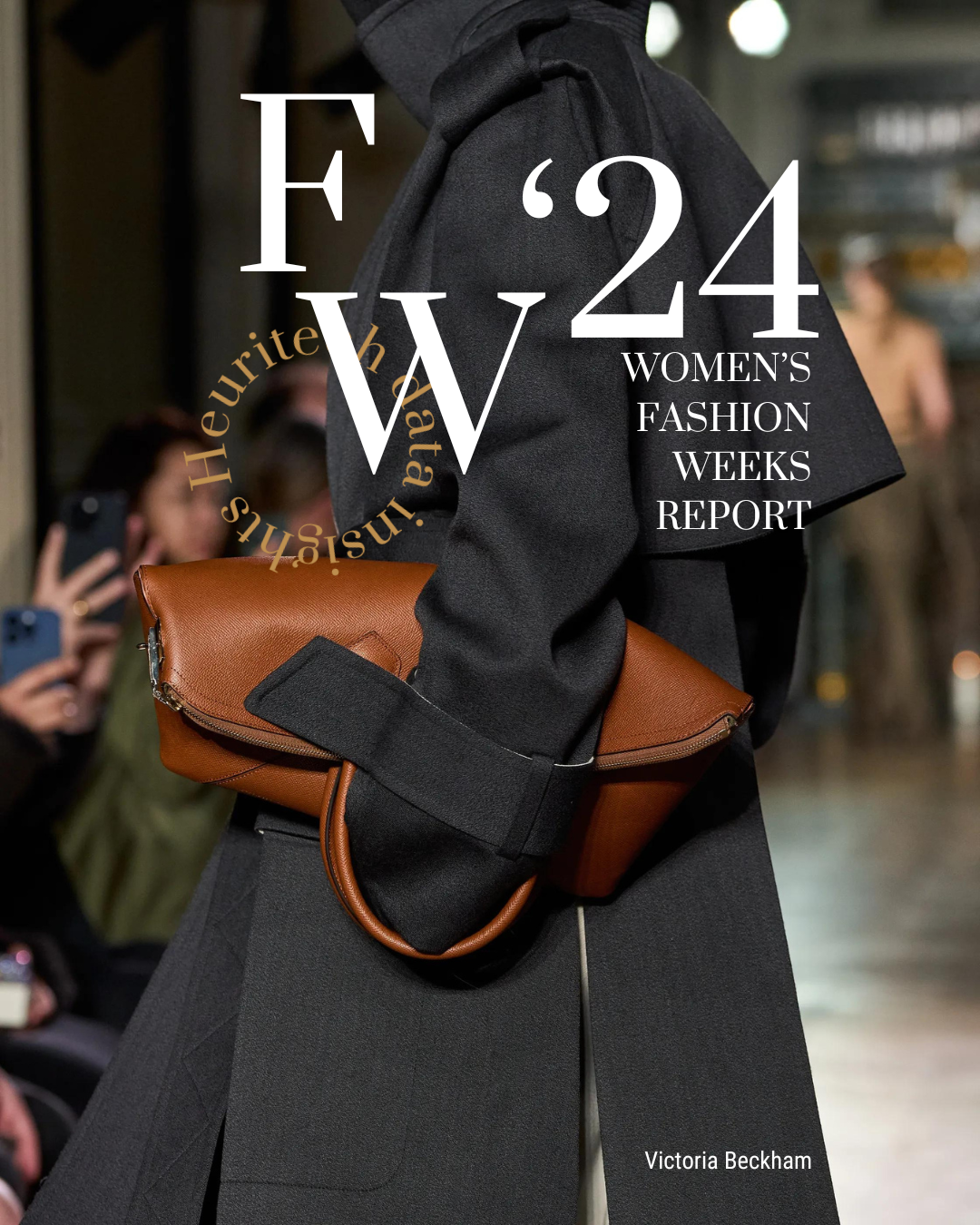Fast Fashion: The urge to change
Thanks to a strong store network, fast fashion brands Zara and H&M have long dominated the ready-to-wear market and brought retail distribution to a global stage.
Zara owner and worldwide fashion retail leader, Inditex, made $3.9 billion in profits in 2018.
Delivering a large variety of affordable outfits directly inspired from the runway, they have kept fashionistas coming back for more and fed their insatiable desire for novelty at any occasion.
But the pressure on the supply chain and the overstock resulting from fast-paced time-to-market, has accentuated both social and environmental issues as well as concerns regarding transparency.
As a result, H&M sales have dropped, Asos issued a profit warning and the wardrobe share of mid-priced fashion items from once iconic American chains suc as the Gap or J. Crew dropped to 14%, down from 20% in 2018.
Uniqlo, the world’s third biggest retail leader, built an alien model in the fast fashion world in 1984: an anti-brand for all, leveraging product value to new heights.
Now, these fast-fashion veterans are being challenged by lower-priced retailers like Fashion Nova, Boohoo and ASOS, as well as sustainable DNVB brands, like Reformation or Armedangels. The industry should face the fact that the time has come to slow down.

Fast fashion facing increasing disposable culture fatigue
When fast fashion leader, Zara, opened its first US flagship store in 1990, it announced that it would only take 15 days for a garment to go from concept to production. Since its Spanish outset in the 70’s, the retailer revolutionized ready-to-wear by connecting high-street crowds with modest budgets to the latest trends. It also introduced scarcity in a mass-market environment through limited-editions and high stock rotation (the store assortment changes twice a week). These retailers became the place to find disposable outfits for festivals, costume parties and holiday season receptions.
Since Karl Lagerfeld x H&M in November 2004, fast fashion has also fully embraced the mix & match trend and launched another store traffic driving trend: designer “capsule collections” featuring high-profile designers.
Nowadays, Zara owns a task force of nearly 300 designers and produces 20 000 new pieces per year through 24 collections. H&M produces approximately 3 billion items to sell across its 4,800 stores through 15 to 16 collections per year.
Specializing in nightclub outfits since its inception in 2006, Fashion Nova is able to produce 600 models per week, outpacing traditional fast fashion retailers and giving way to ultra-fast fashion. Boohoo.com, ASOS and Missguided can produce merchandise in two to four weeks, compared to five weeks for Zara and H&M and the six to nine-month cycle of traditional retailers.
As the Fung Global report stated, these fast fashion retailers “avoid the historical retailer dilemma of product shortages versus excessive inventory, and ensuing markdowns and lower “margins”.

In November, 2018’s most googled brand, Fashion Nova, sold a replica of the fuschia Yeezy outfit and Labourjoisie mini jumpsuit, that influencer-model Kylie Jenner had worn for her 21st birthday only twenty hours later.
According to the recent Thredup survey, one in four women intends to stop buying fast fashion items.
This fast fashion boycott ranked 6th among the most popular eco-conscious measures, after flexitarianism, public transport use, carpooling, recycling, resale market purchases and durable goods purchases.
Young people tend to use apps like Good On You to gage the sustainability commitment of thousand of brands or read engaged bloggers such as the Eco Warrior Princess.
She wrote an article on the benefits of abandoning fast fashion purchases.
How fast fashion old-timers are finally setting an example in sustainability
The world’s population consumes about 62 million tons of clothes per year, but only 20% are being reused or recycled. The reality is that over 60% of all clothing produced are thrown out within a year, ending up either in landfills or being incinerated.
As a result, fast fashion now has to deal with another competitor: resale market platforms. In fact, Thredup outlined in a recent report, that the resale market totalled $24 billion last year and should exceed the size of fast fashion retail by 2028.
In order to anticipate this surge, Neiman Marcus bought a stake in the online second hand store, Fashionphit, and became the first major retailer to officially adopt such a strategy.
David Sävman, H&M Group’s head of production, highlighted a turnaround in the fast fashion strategy at a recent meeting in Hong Kong: “We have to produce what people want to buy and not hope that they want to buy what we have produced. That model is not sustainable.”
The Swedish player recorded a recent drop in sales and profits which forced it to face its structural issues, including a production process which led to $4.3 billion of unsold clothes in early 2018.
The H&M Group, ranked as the most sustainable fashion company by Dow Jones’ Sustainability Index, was one of the first fast fashion companies to implement programs to reduce its environmental footprint. Since 2011, it has launched its Conscious Collection every Spring, which uses materials like organic cotton and recycled polyester, as well as a garment-collecting initiative in 2013 with a collaboration with I:CO.
After conducting reports on water use and wastewater management within its supply chain, H&M has set ambitious goals such as using 100% renewable energy for its own operations by 2035 and the elimination of dangerous chemicals by 2020.
Now, clients can access further information for each garment (production country, supplier names, factory names and addresses…) whether they shop on the e-commerce platform or in store by using the H&M app.
Its rival, Spanish retailer and Zara owner, Inditex, has announced a $4 million multi-year agreement with MIT to carry out research on the circular economy and sustainable tech in the textile industry.
As an answer to H&M’s Conscious Collection, Zara started, but quietly, releasing products under its eco label “Join Life” in 2015.
According to Zara Spokesperson Amaya Guillermo, “Zara has implemented a 3-step product verification process: an algorithm that analyzes each drawing for insensitive or offensive elements or words. Each garment is then analyzed by a worldwide committee in Spain at their headquarters and then on to local committees in each market where the item will be sold.”
Uniqlo built its success on two purported sustainable fundamentals: basic color-block apparel adapted to everyday life and cutting-edge technology. It first released a fleece jacket tailored for everyday use, then, in 2006, its Heattech line of thermoregulating underwear sold millions of units in a single winter, and finally, in 2009, the ultra-light down jacket that invaded changing rooms around the planet.
Thanks to a series of bestsellers that transcended trends, it became a key player. As a result, its turnover (€10.8 billion) propelled it to the top in 2014. “Uniqlo offers sweaters that can suit everyone, this year as in ten years’ time,” said Mr. Yanai, chairman of Uniqlo.
The brand also pioneered the in-store use of AI.
Despite the numerous actions they have undertaken, H&M, Zara and Uniqlo only scored an “it’s a start” rating from Good on You due to their fast-fashion models.
Back to basics: alternative brands to fast fashion
Born in an analogic world where brick-and-mortar stores used to rule, fast fashion leaders were slow to adopt the digital native connected reflex, and less adept than new entrants at mastering information technology. For example, Asos stocks over 60 000 items at any given time allowing e-commerce retailers to constantly update their inventory. Asos offers a wide range of branded goods at different price points. Moreover, it controls the timing of the drops of its trends, waiting for a full assortment before dropping them in one go.

Since 2009, Reformation, the LA-based Digitally Native Vertical Brand, renowned for its party dresses and feminine mix and match separates, has presented itself as a sustainable fast fashion leader. In 2017, the brand made noise in the denim industry when it launched Ref Jeans, a line of affordable jeans that meets the same sustainable material standards.
It’s founder, Yael Aflalo, stated “a typical fashion brand ships four times a year; there’s just no benefit to designing clothes 18 months in advance. You only get to learn [about your customer] four times a year, then, that’s not much learning.”
Breaking industry norms, Reformation produces new 15 to 20 piece collections on a weekly basis. It takes 40 to 45 days for products to go from design to store shelves.
Yael Aflalo sources eco-friendly materials and deadstocks fabrics, which enables the brand to reduce its carbon footprint. In addition, it manufactures much of its range close to its points of sales to reduce its carbon footprint and uses a reputable carbon offset program.
She credits her ingenious RefScale, an internal tool meant to break down each item’s impact on the environment.
One of Reformation’s goals is to have 75 % of its range be machine washable in cold water.

German-based Armedangels is billed as the most fair label in the world, providing both sustainable materials and fair working conditions. For example, the brand uses wood or horn for its buttons, instead of plastic. For its basics and timeless products, it also uses Lenzing Ecovero, the most ecological and clean viscose.
Its production avoids harmful chemicals and is 100% traceable.
For the founders, eco-consciousness is not a trend but an attitude and a responsibility.
Thanks to our artificial intelligence solution using cutting-edge visual recognition on social media, we enable fashion brands to meet their clients’ demands and never miss out on any trends again. With better information on the design and products clients needs, we avoid overstock and waste.




